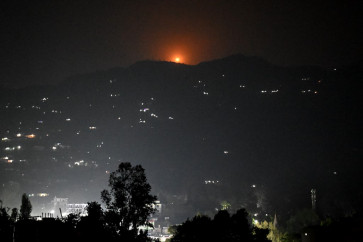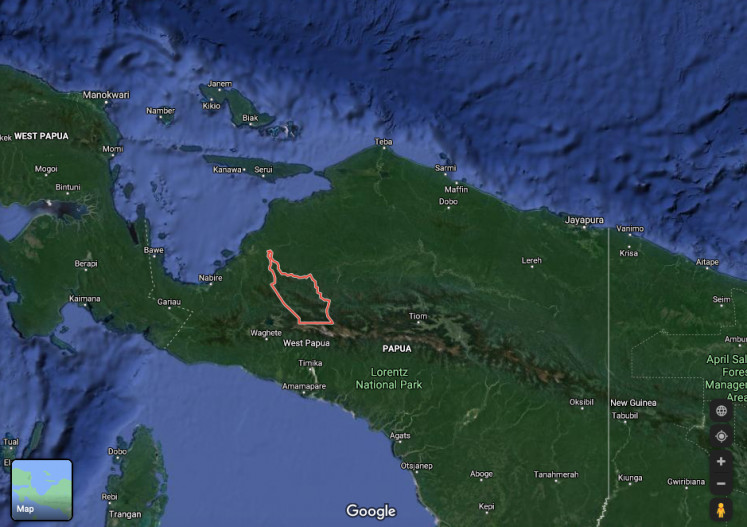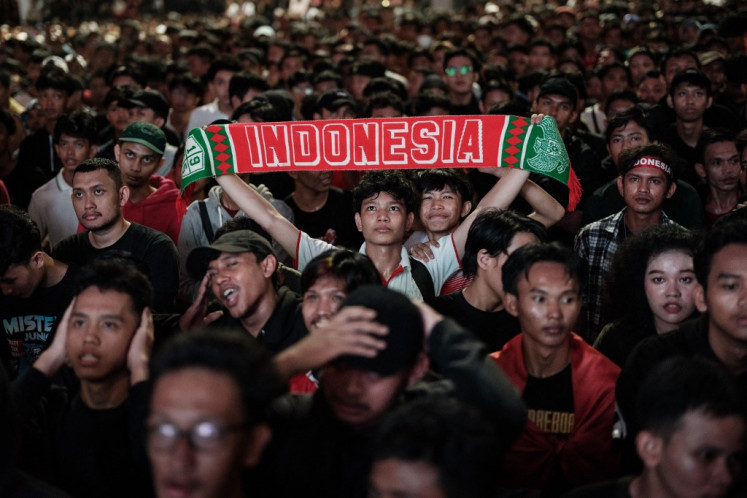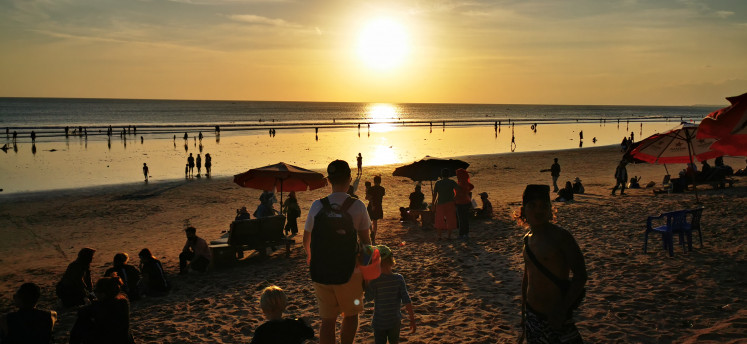Your letters: Climate variability in Indonesia
Inundated roads: Vehicles pass along the inundated Jl
Change text size
Gift Premium Articles
to Anyone

I
em>Inundated roads: Vehicles pass along the inundated Jl. Boulevard Kelapa Gading in North Jakarta on Jan. 23. The combination of heavy rains and poor drainage systems in this commercial district was blamed for the flooding. JP/Awo
The article by Evan Oktavianus entitled, 'Jakarta's floods and the changing climate' (The Jakarta Post, Feb. 21) has raised the bar on the reporting of climate-related issues in the media primarily because the author is clearly knowledgeable about the sciences of meteorology and climatology and secondly, he comments on real, long-term weather data (rainfall) for Jakarta.
The author cites two peer reviewed studies to back the case for Jakarta to have more rainfall in the wet season, especially in January and February when the city is most vulnerable to flooding, and less rain in the dry season. In sum, while Jakarta tends to experience less rain today due to the reduction of rain frequency in the last century, the city has experienced more frequent heavy rain with consequent flooding.
The first study by the World Bank shows that the average monthly precipitation rate in Jakarta, despite showing a high year-by-year variation, has seen a consistent increase at a rate of 15.2 millimeters per month since the 1900s.
The second study of Jakarta's rainfall from 1912 until 2014 by Siswanto of the Meteorology, Climatology and Geophysics Agency (BMKG) shows that the number of wet days has reduced over the last century but the number of days with heavy rain, that is, with an intensity of greater than 50 mm per hour, has increased by 20 percent, especially in the last 40 years.
These two excellent studies look at Jakarta as a whole, but with annual rainfall varying from as little as 1,500 mm on the north coast, to over 3,000 mm in South Jakarta (Kemang, Lebak Bulus) due to a steep climatic gradient existing over the 60 kilometers between the Jakarta coastal plain and the Bogor hills and mountains, to which part of the region of Greater Jakarta, or Jabodetabek, do these data refer, and are the general trends valid for the whole area or only part of it?
Statistical analysis of a 24-year data set of daily rainfall recorded at a private rain gauge in Lebak Bulus between 1992 and 2014 lends support to the trend for wetter wet seasons, monthly increases in rainfall and greater frequency of high intensity rainfall events, but contradicts the drier dry season trend noted. In fact, between 2009 and 2014, South Jakarta has not really had a dry season, with only 11 out of the 72 months in that six year period having less than 100 mm of rain and only in 2012 were there four consecutive months with less than 100 mm.
As the world's largest archipelago, consisting of over 17,000 islands stretching 5,000 km from east to west that straddle the equator and the tropics within the Inter-Tropical Convergence Zone (ITCZ), Indonesia embraces four of the world's major 31 sub-climates. The country is influenced by the northwest, northeast, southwest and southeast monsoons (trade winds), local land and sea breezes, Föhn wind phenomena, like the warm, dry Bohorok winds of North Sumatra, and topographic influences from the chain of 3,000 meter plus volcanoes that stretch the length of the archipelago.
When the regional influences of the cyclical El Nino and La Nina events are taken into account, the challenge to accurate prediction of weather in Indonesia is compounded further. What is evident is that the BMKG and the IPCC will need to analyze climate data sets for the multiplicity of regions and sub-regional climates within the archipelago to detect trends, rather than looking at averages for the country as a whole, which will have little or no practical value.
Dr. DE Parry
Jakarta









